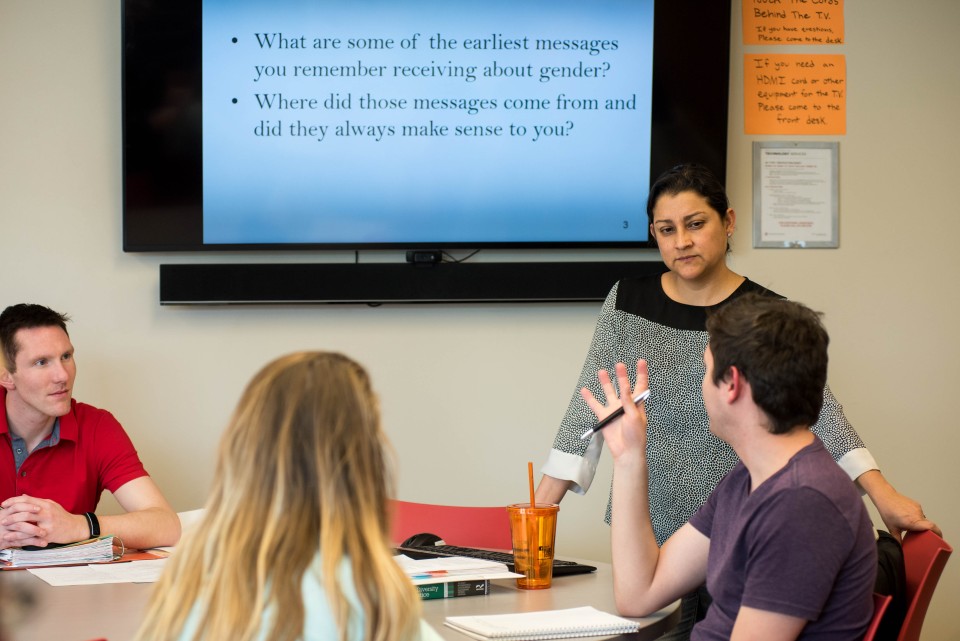
In 2017, 83 Ohio State students were reported for using an app called GroupMe to share quiz questions and answers (Bever, 2017). At universities across the nation, students have cheated using various apps and technology. Increased access to technology tools does provide additional avenues for cheating, but the availability of these new tools has not led to more cheating (see Lang, 2013).
Still, preventing academic misconduct is a topic that weighs on many instructors’ minds. We want students to learn and to come by their degrees honestly. The good news is that the educator’s role in academic honesty does not always have to be punitive or after-the-fact. Proactively promoting academic integrity in positive ways can reduce the likelihood that students will commit misconduct.
Background
In the United States, public attitudes about academic misconduct range from mild irritation at the existence of cheating to the moral outrage one might show toward hard criminal offenses. In an effort to reduce cheating, instructors often implement defensive measures. For example, using a digital plagiarism detector such as Turnitin is meant to deter students from plagiarizing in their writing and to catch the ones who do so. Setting time limits for synchronous online exams is a common tactic for reducing the time available for students to use the textbook or a website like Chegg to solve their problems for them.
But telling students not to cheat—and what will happen to them if they do—only goes so far in deterring academic misconduct.
Underneath those dos and don’ts are implicit values present in the American system of higher education. What if we openly communicated those values instead?
What do we value?
The concept of academic integrity is often taught with a focus on academic misconduct and how not to misbehave. Students navigate through college trying not to break the rules. Underneath those rules lie traits that are valued in our education system, and in scholarly work. For example, we trust that a student who can explain a concept in their own words rather than quoting a text has truly learned that concept. We also value original thought and the individual voice in scholarly conversation. We place importance on respecting what writers and researchers contribute to the conversation, and on distinguishing who said what.
For a brief history on the development of intellectual property, see Bloch, 2012, Chapter 2.
Do students understand what academic integrity is?
Bretag and colleagues (2014) discuss two main types of research into academic integrity: student self-reports about their cheating behaviors and research on students’ understanding of academic integrity. Based on surveys of students at multiple institutions, they found that students had some idea of what academic integrity is but did not feel they received enough support for how to practice it effectively, beyond the generic information provided early in their college careers. In one of the surveys, students indicated that instructors’ expectations varied and that conventions were not uniform across courses, and that knowing what happens when you commit academic misconduct is not helpful.
Learning disciplinary practices
Nelms (2015) points out that many students plagiarize unintentionally on their way to becoming more expert in their fields. As novice students learn to use the language of their disciplines, they may begin by imitating the language that they are reading. He provides a positive view of plagiarism as an opportunity to help students develop their own voices and learn to participate in scholarly conversation. By viewing students first as learners, it is possible to create penalties that are educational rather than punitive (Morris, 2016).
The learning environment
In Cheating Lessons (2013), James Lang examines how features of a learning environment might lead to increased academic misconduct. He argues that instructors can influence these features directly. They are (p. 35):
- Emphasis on performance: Students who are more concerned with doing well on a test than with learning are more likely to cheat on that test. If an instructor overemphasizes grades, the focus on performance can put pressure on students and become a dominant feature of the learning environment.
- High stakes: If a student’s grade is determined by one or two assessments, such as a midterm (at 50% of the grade) and a final (the other 50% of the grade), cheating is more likely. In such a class, students are not receiving regular feedback on their work, and only have two chances to demonstrate their learning.
- Extrinsic motivation for success: Many students are motivated by grades or other extrinsic motivators, such as pressure from parents. However, students who are motivated by grades or other extrinsic rewards are not necessarily only motivated by extrinsic rewards.
- Low expectation of success on the part of the student: A student who does not believe they have the necessary knowledge and skills to successfully complete an assessment are more likely to resort to cheating.
In the next section, we’ll discuss how to address each of these characteristics so we can take a positive, rather than punitive, approach to teaching about academic integrity.
In Practice
From explicit communication to assessment design to student support, the strategies below will help you proactively promote academic integrity in your courses.

Be transparent about expectations
Good course design, coupled with transparency, can go a long way to reducing academic misconduct. Explicitly communicate to students your expectations for the course, for individual assessments and assignments, and for academic honesty and other behaviors you want them to demonstrate. Include language in your syllabus around academic integrity and discuss openly what that means and looks like at the start of term. Ensure students understand both the university expectations for academic integrity and the specific expectations for your course.
Align all assessments and assignments to learning outcomes and communicate that alignment clearly to students. Address any specific academic integrity expectations for a given assignment or assessment in the instructions. For example, make clear how resources should be used and cited, what types of collaboration are allowed or encouraged, how previous student work can be repurposed (if at all), and whether a quiz or test is “open book” or “open notes.” These clarifications will help students understand why their work matters, how it fits in the broader context of your course, and what they need to do to be successful while maintaining academic integrity.
Communicate values
Support students to understand the values and communication conventions within your discipline. While an introductory composition course may help them learn fundamental concepts or habits, that is just the beginning. Explain to students that they are participating in a scholarly conversation—just as they would with their friends, they should respect the ideas that everyone contributes, including their own. Openly encouraging them to find their own voices as distinct from others can reduce the likelihood of plagiarism.
Beyond scholarly conversation, Lang suggests that educators must explain to students the importance of creating original work in their discipline.
"… I think these two questions are ones that students might pose to faculty in any discipline: how do I produce my own work in this discipline, and why does it matter that I produce my own work? Those two general questions, it seems to me, are ones that each discipline—and perhaps even each faculty member and each course—has to answer distinctively. And those two questions, it also seems to me, can help form the basis for the more substantial conversation you have with your students about academic honesty and dishonesty in your courses, in addition to the general conversation they might be having through educational campaigns on campus."
(Lang, 2013, p. 194)
Lang teaches literature, so for him, original work means creating meaningful connections to other works, or to current events in the world. He reminds readers that building these connections leads to deeper learning as students create a more sophisticated mental network (Bransford, et al., 2000, Chapter 2).
If you teach in another discipline, your approach will be different. In the experimental sciences, for example, we often begin by replicating an experiment, fully or partially. We build on or extend it to test another hypothesis or look at the same hypothesis under different conditions. We get a result, we interpret the result, and this prompts more questions and hypotheses. In the sciences, we have a responsibility to be honest and accurate about those results (Committee on Science Engineering, and Public Policy, 1995).
Teach for mastery to de-emphasize performance
Students develop mastery when they acquire a set of skills, practice integrating those skills, and then know when to apply them (Ambrose, et al., 2010). They need opportunities to practice skills in isolation and in combination, and you should evaluate them in both situations. If students are weaker in some skills, provide additional support, perhaps in the form of tutorials or additional practice outside of class.
Build in opportunities for students to apply important skills in different contexts. Some students excel with certain types of assessments and not others. Providing multiple opportunities—and options—for assessment allows students a variety of ways to demonstrate their knowledge and skills.
Lower the stakes
Among your assessments should be many lower stakes opportunities. For example, rather than giving one midterm and one final, include multiple exams or quizzes that are worth fewer points overall. Your students will benefit from the testing effect; Karpicke and Roedinger (2008) demonstrated that the more frequently students were tested on information, the more likely they were to retain that information.
Plan ways for students to practice for graded assessments during class time or through ungraded asynchronous activities. Autograded quizzes in Carmen that present a random set of questions aligned to appropriate learning outcomes make it possible for students to take a quiz as many times as needed until they get the answers right. Shorter assignments that are worth just a few points can help students practice—and get feedback on—what they need to do for a bigger project.
Scaffolding assignments is another way you can lower the stakes. Break a larger project or paper into manageable pieces and ask students to show their progress on each piece, so you can see how their work unfolds over time. You will get a sense of which students need more support earlier in the semester, preventing unpleasant surprises later.
Foster intrinsic motivation

According to Bain (2004), “People learn best when they ask an important question that they care about answering.” Connecting your course material to students’ interests and personal lives beyond your class can increase their investment. For example, a freshman statistics seminar at Carnegie Mellon University, Statistics of Sexual Orientation, included rigorous statistical analysis while also dealing with theories about the LGBT population.
The following are additional techniques for fostering student motivation (Ambrose et al., 2010).
- Integrate real–world, authentic tasks so students can see the relevance of what they are learning.
- Connect your course content to other courses students are taking or will take so they understand its place in the larger context of their educations.
- Demonstrate how learned skills will be useful in students’ future professional lives.
Build students’ self-efficacy
In a chapter on student motivation, Ambrose et al. (2010) describe two parts to self-efficacy. First, students must believe they know what they need to know in order to succeed at a given task. Second, they must believe, when they begin that task, that they will succeed. Even if students have the necessary knowledge and skills, they may feel rushed on the task, that the instructor will not grade fairly, that other members in a group project will hinder their progress, or simply that they will not succeed. Imposter syndrome and stereotype threat can also affect students’ self-efficacy.
Lang (2013) and Ambrose et al. (2010) describe a variety of strategies for supporting student self-efficacy. One important strategy is to help students develop metacognition. Students who have an awareness of how they learn tend to be more successful learners. There are a variety of ways to support metacognitive thinking. For example, in STEM courses, separate problem-solving strategies from the actual computation to help students categorize problems into types and see deeper patterns. Ask students to review their graded work and reflect upon study strategies that worked or didn’t work for them (see “exam wrappers”). Explicitly guiding students to identify and leverage behaviors they can control, such as study strategies and time management, can increase their success. Sharing recommended study strategies and resources with students can give them options they may not have considered.
Dive deeper into strategies for Designing Assessments of Student Learning and Supporting Student Learning in Your Course.
Examples
Learning for Mastery
Building a Question Bank
Student Tips for Preserving Academic Integrity
Summary
By taking proactive approaches, you can make the shift from the defensive prevention of cheating to the creation of an environment in which students are less likely to cheat in the first place.
Key strategies for promoting academic integrity include:
- Focus on positive messages rather than fear or the threat of punishment. Emphasizing the consequences of academic misconduct does not support students to understand why academic integrity matters.
- Use good course design to reduce the chances of academic misconduct. Intentionally align assignments to learning outcomes and clearly communicate that alignment to students.
- Provide transparent and explicit instruction and support around academic integrity. Students come to college with diverse backgrounds and values around appropriate academic behavior. Openly discuss what academic integrity looks like at the university and in the context of your course.
- Explain the values and discourse of your discipline. Provide positive examples of how students can enact those values. This is a crucial piece of helping students see themselves as participants in the scholarly conversation of your discipline.
- Teach for mastery and lower the stakes. Focusing on learning over grades and allowing students many opportunities to practice—and make mistakes—will lessen the anxiety around performance on bigger exams or projects.
- Foster intrinsic motivation and help build students’ self-efficacy. Authentic assignments connected to student interests and a balance of challenge and support will keep students motivated.
You may do everything you can to proactively promote academic integrity but still encounter the occasional student who cheats. In the event that you need to report academic misconduct, consult these resources from the Office of Academic Affairs to familiarize yourself with your responsibilities and the university procedure.
Explore
Resources
- Academic Integrity and Misconduct (website)
- Cheating Lessons: Learning from Academic Dishonesty (e-book)
- Instructor Resources for Choosing and Using Sources (website)
- International Center for Academic Integrity (website)
- Plagiarism, Intellectual Property and the Teaching of L2 Writing (book)
- Setting up Question Banks in Carmen (help article)
- Using question banks to randomize exam questions in Carmen (help article)
Learning Opportunities
References
Ambrose, S.A., Bridges, M.W., DiPietro, M., Lovett, M. C., Norman, M.K. (2010). How learning works: Seven research-based principles for smart teaching. San Francisco: Jossey-Bass.
Bain, K. (2004). What the best college teachers do. Cambridge, MA: Harvard University Press.
Bever, L. (2017). Dozens of Ohio State students accused of cheating ring that used group-messaging app. The Washington Post, 13 Nov. 2017. https://web.archive.org/web/20171114023900/https://www.washingtonpost.com/news/grade-point/wp/2017/11/13/dozens-of-ohio-state-students-accused-in-cheating-ring-using-group-messaging-app/
Bransford, J.D., Brown, A.L., and Cocking, R.R. (Eds.). (2000). How people learn: Brain, mind, experience, and school. Washington, D.C.: The National Academies Press.
Bretag, T., Mahmud, S., Wallace, M., Walker, R., McGowan, U., East, J., Green, M., Partridge, L., & James, C. (2014). ‘Teach us how to do it properly!’ An Australian academic integrity survey. Studies in Higher Education 37(7): 1150---1169.
Bloch, Joel. (2012). Plagiarism, intellectual property and the teaching of L2 writing. Bristol, UK: Multilingual Matters.
Committee on Science, Engineering, and Public Policy. (1995). On being a scientist: Responsible conduct in research. 2nd edition. Washington DC: National Academy Press. https://www.ncbi.nlm.nih.gov/books/NBK232224/
DiPietro, M. (2009, Fall). Diversity content as a gateway to deeper learning: the statistics of sexual orientation. Diversity & Democracy 12 (3). https://web.archive.org/web/20210110071354/https://www.aacu.org/publications-research/periodicals/diversity-content-gateway-deeper-learning-statistics-sexual
Karpicke, J.K. and Roediger, H. L. (2008). The critical importance of retrieval for learning. Science 319: 966-968.
Lang, James M. (2013). Cheating lessons: learning from academic dishonesty. Cambridge: Harvard University Press.
Morris. E.J. (2016). Academic integrity: A teaching and learning approach. Chapter 70 (pp. 1038-1051) in Bretag, T. (Ed.). Handbook of Academic Integrity. Singapore: Springer Science and Business Media.
Nelms, G. (2015, July 20). Why plagiarism doesn’t bother me at all: A research-based overview of plagiarism as an educational opportunity. Teaching and Learning in Higher Ed. https://teachingandlearninginhighered.org/2015/07/20/plagiarism-doesnt-bother-me-at-all-research/
Tatum, H. and Schwartz, B.M. (2017). Honor codes: Evidence based strategies for improving academic integrity. Theory into Practice 56:129-135.

